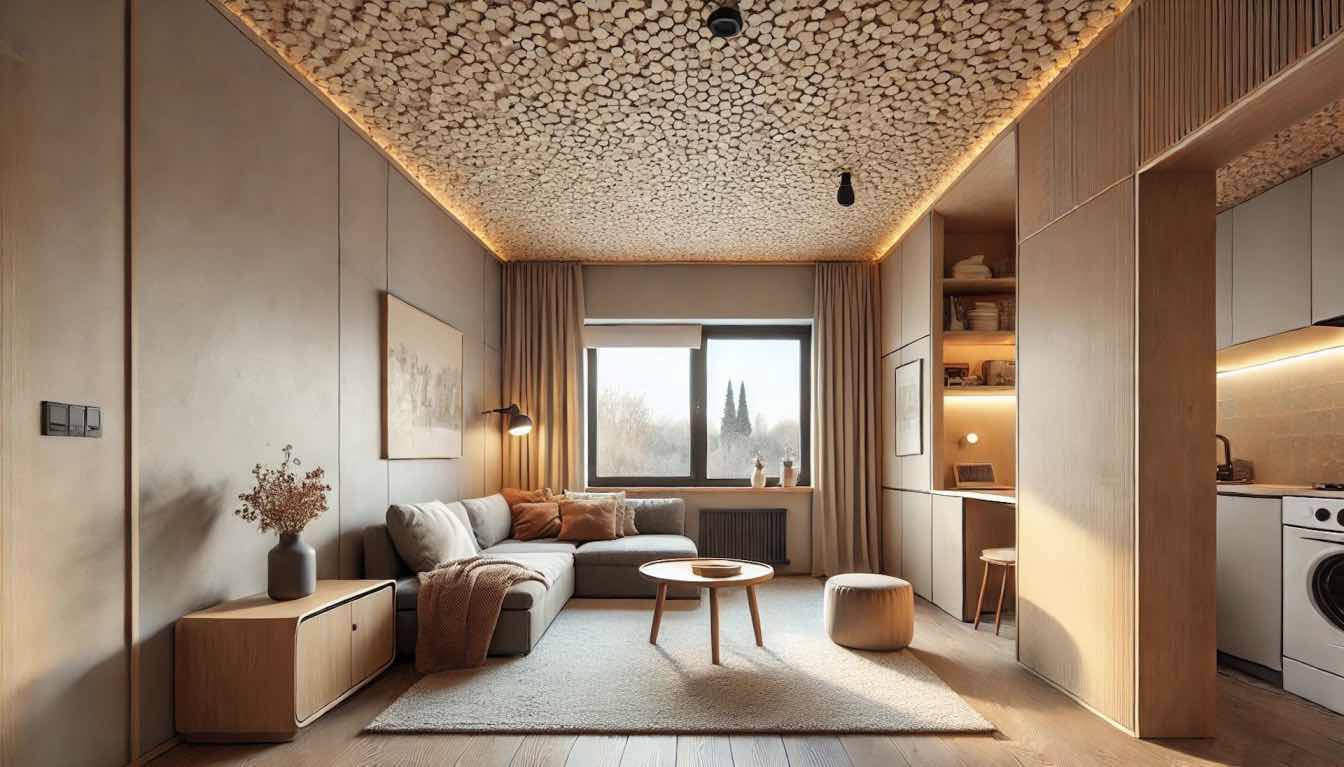When it comes to home decor, every detail matters- right down to the ceiling. If you own a small bungalow, you might find yourself pondering the pros and cons of popcorn ceilings.
These textured ceilings, also known as acoustic or stipple ceilings, were immensely popular from the 1950s to the 1980s. But are they a good fit for your cozy abode today?
In this post, we'll explore the pros and cons of popcorn ceilings, helping you make an informed decision for your cozy home. By the end, you'll have a clear understanding of whether this ceiling style fits your aesthetic and practical needs.
What Are Popcorn Ceilings?
Popcorn ceilings are named for their distinctive texture, which resembles popped corn kernels. This bumpy look is created by spraying a mixture of paint and Styrofoam or vermiculite onto the ceiling. Initially, this style was a hit for its ability to hide imperfections and offer noise reduction. But how do these features hold up in modern homes?
Pros of Popcorn Ceilings
Popcorn ceilings are generally cheaper to install than smooth ceilings. The application process is straightforward and requires fewer materials. This can be a budget-friendly option if you're looking to save money on a renovation project.
One of the main attractions of popcorn ceilings is their sound-dampening properties. The textured surface helps absorb sound, making it an excellent choice for homes in noisy environments. If you live near a busy street or have noisy neighbors, this could be a significant benefit.
Cons of Popcorn Ceilings
One of the biggest downsides of a popcorn ceiling is that it can be challenging to clean. Dust and cobwebs can get trapped in the texture, making it difficult to remove without damaging the finish. This can be a hassle, especially in rooms like the kitchen, where grease and grime can accumulate.
Potential Health Risks
Older popcorn ceilings may contain asbestos, a hazardous material linked to lung disease. If your home was built before the 1980s, it's essential to have the ceiling tested before doing any work. Even if it doesn't contain asbestos, the rough texture can still pose a risk for allergies, as it tends to collect dust and allergens.
Outdated Aesthetic
While some people love the retro look of popcorn ceilings, others find them outdated. If you're looking for a modern, sleek design in your bungalow, a popcorn ceiling might not fit the bill. This could affect your home's aesthetic and resale value.
How to Decide if Popcorn Ceilings Are Right for Your Bungalow?
Consider what you need from your ceiling. Are you looking for a cost-effective solution that offers soundproofing, or are you more concerned about aesthetics and ease of maintenance? Your priorities will guide your decision.
Think About Long-Term Plans
Are you planning to sell your bungalow in the near future? If so, consider how a popcorn ceiling might impact its resale value. While some buyers might appreciate the character it adds, others could see it as a deal-breaker.
Consult Professionals
If you're unsure, consulting a professional can provide valuable insights. They can assess your current ceiling condition, test for asbestos if needed, and offer advice tailored to your specific circumstances.
Alternatives to Popcorn Ceilings
For a modern, clean look, you might opt for smooth ceilings. While they require more prep work and materials, the result is a sleek finish that can elevate your home's aesthetic. However, remember that this option
may come with higher costs and maintenance needs.
Beadboard Panels
Beadboard panels are another stylish alternative. These panels add texture and interest to your ceiling without the drawbacks of popcorn texture. They are easier to clean and maintain, and they can lend a charming, cottage-like feel to your bungalow.
Coffered Ceilings
Coffered ceilings create a sense of depth and luxury in any room. Though more labor-intensive and costly, they can dramatically enhance your home's interior. This option is ideal if you're looking to make a bold design statement.
Tips for Maintaining Popcorn Ceilings
Use a soft brush attachment on your vacuum cleaner or a feather duster to remove dust and cobwebs regularly. This can help maintain the ceiling's appearance and reduce allergens.
Spot Cleaning
For stubborn stains, a gentle spot cleaning with a damp cloth and mild detergent can do wonders. Be careful not to scrub too hard, as this can damage the texture.
Professional Cleaning
If your ceiling is particularly dirty, consider hiring professionals. They have the tools and expertise to thoroughly clean the ceiling, without causing damage.
DIY Removal of Popcorn Ceilings
Before attempting to remove a popcorn ceiling yourself, ensure it does not contain asbestos. If it does, hire a professional to handle the removal safely.
Gather Supplies
You'll need plastic sheeting, a spray bottle, a scraper, and a ladder. Wetting the ceiling can make scraping easier and minimize dust.
Start Scraping
Work in small sections, spray water onto the ceiling and let it soak in before scraping. Take your time to avoid damaging the underlying drywall.
Professional Removal Services
Hiring professionals can save you time and ensure the job is done safely and efficiently. They have the equipment and training to handle the removal process with minimal mess.
Cost Considerations
While professional removal can be expensive, it may be worth the investment for peace of mind and quality results. Get multiple quotes to find a service that fits your budget.
Post-Removal Options
Once the popcorn ceiling is removed, you can choose from various finishing options. Whether you opt for a smooth ceiling, beadboard panels, or coffered ceilings, your bungalow will benefit from the updated look.
Weighing the Pros and Cons of Popcorn Ceilings for Your Small Bungalow
Deciding whether to keep or remove a popcorn ceiling in your small bungalow involves weighing the pros and cons. While they offer cost-effective installation and acoustic benefits, they can be difficult to clean and pose health risks if they contain asbestos. By considering your needs, consulting professionals, and exploring alternatives, you can make the best choice for your home.
For more on this content, visit the rest of our blog!





